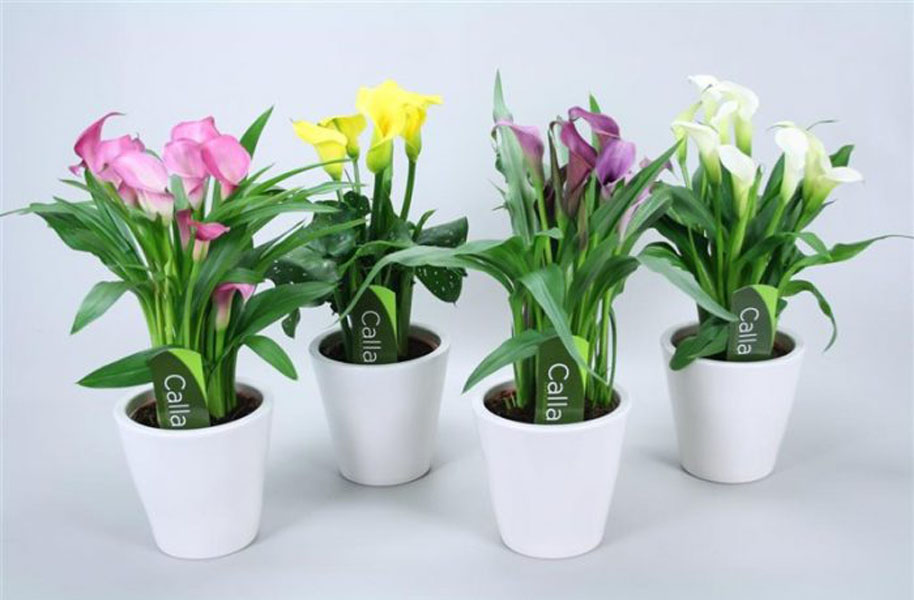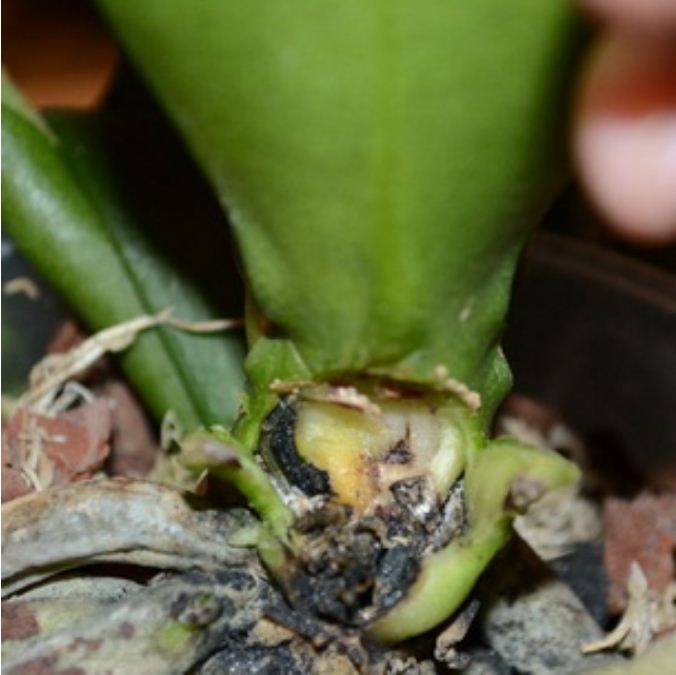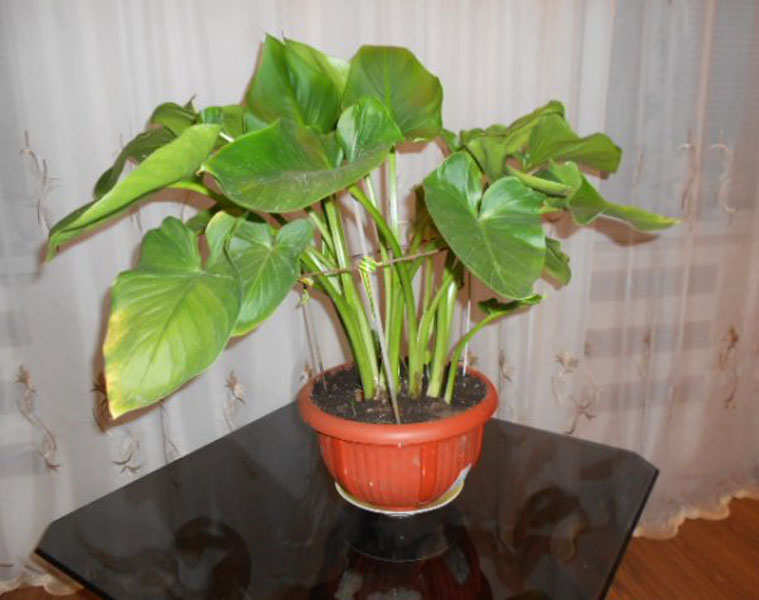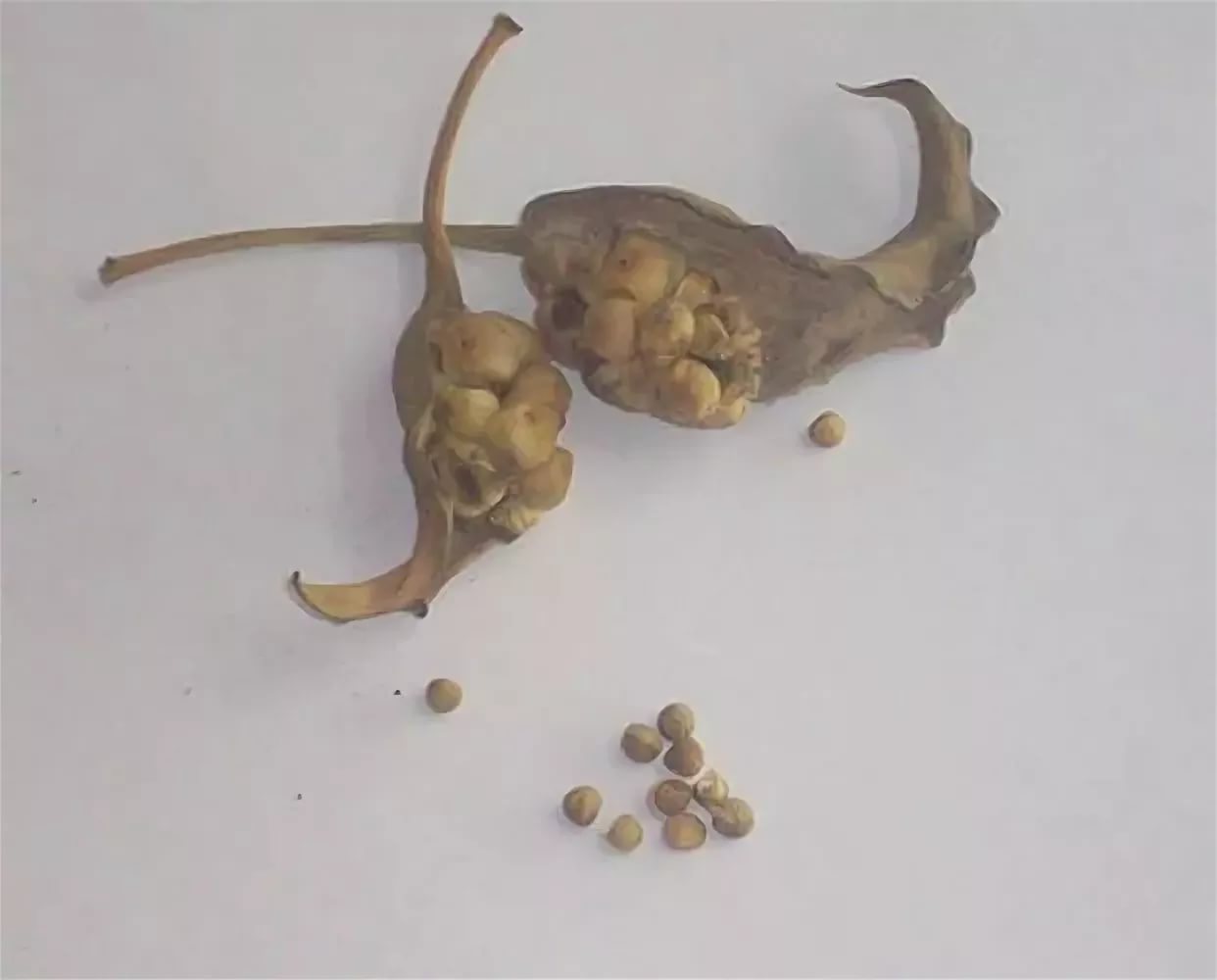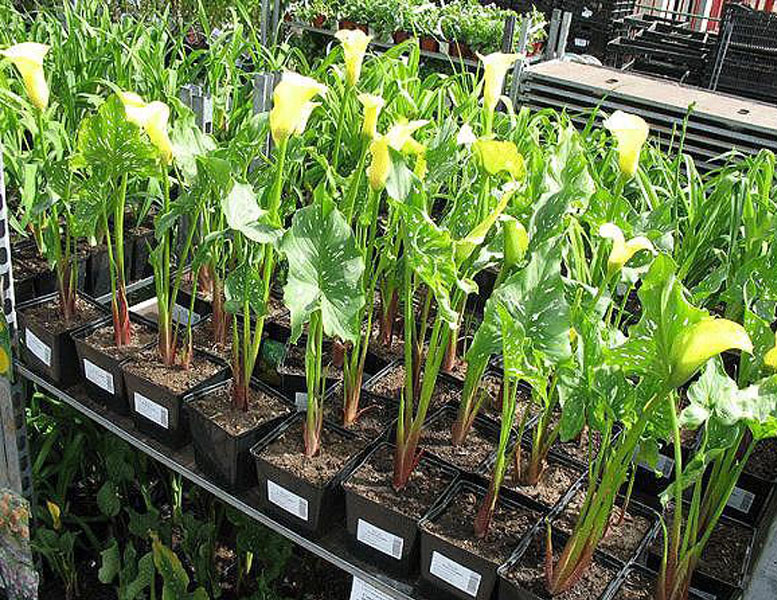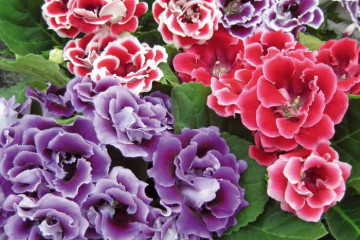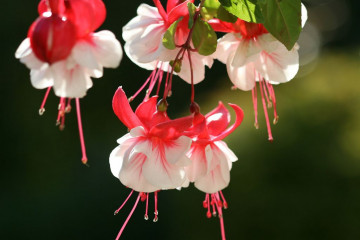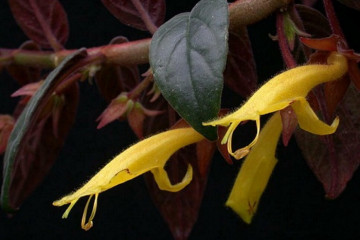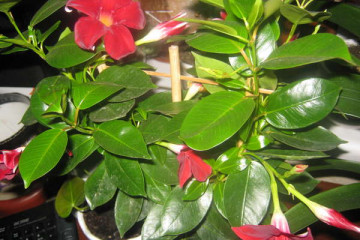Calla flowers - growing and caring at home
Calla lilies are a beautiful and elegant flower that will organically fit into almost any interior of a house or apartment.
Growing and caring for calla lilies at home
The flower is also called calla. In its natural environment, it is common in South America and Africa. In indoor floriculture, Ethiopian calla lilies or Zantedeskia are grown. The plant got its name in honor of the Italian botanist Giovanni Zantedeschi.
White and colored calla lilies are grown. Exquisite bouquets are made from her flowers.
For calla lilies, cultivation and care at home is not particularly difficult. It is necessary to create favorable conditions for the development of the flower: constantly moistened soil and lighting for 10-12 hours. However, he does not like exposure to direct sunlight. Diffused light works best for the plant. Water the flower in spring and summer 1 time per day.
The water poured into the pan after watering is drained. This is necessary to prevent root rot.
If the house is hot enough, then the flower is sprayed with water from a spray bottle. In the event that the room has a high temperature and dry air, calla lilies in pots are sprayed 2 times a day. Zantedeschia with white flowers like more humid air. For them, the optimum humidity will be 80%, while for colored ones, the indicator will be 50%.
Soil composition and pot size
To create favorable conditions for plant growth, it is necessary to select the correct composition of the soil mixture. Fertile, slightly acidified soil is best suited. Peat must be present in the potting mix. In specialized stores, you can purchase a ready-made substrate for aroid plants.
For self-preparation of the soil, take 2 teaspoons of turf and 1 teaspoon of peat, leafy earth and sand. You can add clay to the substrate.
To exclude stagnation of water in the flower pot, a drainage layer is arranged, which can be made from broken brick, river pebbles, expanded clay or foam.
The growing container should be shallow and wide. For the pot, you need to pick up a deep pan into which water is poured during watering.
Optimal temperature conditions
Zantedeschia are thermophilic flowers. One of the main points of care at home for a calla flower is the correct temperature regime. It is chosen depending on the season. During the growing season, the temperature is set within the range from + 22 ° C to + 24 ° C.
Top dressing and fertilization
Fertilization of the plant is also included in the care of the calla flower during the growing season. It is held every two weeks. Usually organic and mineral fertilizers alternate.
When nitrogen is applied, the flower will build up its green mass. However, at the same time, he will not throw out peduncles. Only after the buds have appeared on the flower can urea be added to the fertilizer mixtures.
Caring for calla lilies during the rest period
Calla lilies have a dormant period in late autumn, which ends in February. It is also necessary to take care of the flower at this time. The temperature in winter drops to + 15-18 ° С. During this period, zantedeschia either stop growing, but retain their leaves, or the leaves die off completely.
Diseases of domestic calla lilies
Zantedeschia can be affected by aphids, scale insects, false scutes and spider mites.
If these insects are found on the plant, the leaves and stem are washed with soapy water. This operation may need to be repeated.
If this method does not help, then the flower is treated with insecticides.
With waterlogged soil, a sharp increase in the likelihood of fungal diseases is possible. The most common diseases:
- rot: gray, brown, root and bacterial;
- anthracnose.
When affected by gray rot, the leaves and stems are covered with a grayish bloom. This disease can be transmitted through contaminated soil and plants. For treatment, the plant is treated with Rovral fungicides and the like.
If the leaves dry out, it is possible that brown rot has appeared on the flower.
Bacterial rot is manifested by rotting leaves and peduncles at the base. Roots, weeping and rotten, brown spots appear on the bulbs. The affected flower must be destroyed. This disease cannot be cured.
Anthracnose damage can be identified by brown spots that appear on the leaves. These spots increase in size over time and become similar in shape to reddish circles with a light center, crack and dry out. Systemic fungicides are used for treatment.
When root rot is affected, a general wilting of the flower is observed. You can determine the disease by the affected bulb.
If this is caused by waterlogged soil, then watering is stopped, a hydrogel is added to the soil.
Why do calla lilies turn yellow and dry leaves
Yellowing of the leaves occurs in the following cases:
- A dormant period begins for the plant. If the leaves turn yellow at the end of autumn, then this means that the flower is preparing for wintering. This is a natural process. You need to lower the temperature or take the plant to a cooler room.
- If the leaves turn yellow during the growing season, then this is possible with a lack of moisture. We need to water the flower. If the ground is damp, then the flower is sprayed with warm, settled water.
- It can also happen when the soil is very waterlogged. In this case, watering is stopped until the top layer of the earth dries out by 1 cm.
- The temperature may be high in the room. If this happened during the heating period, then the plants are placed away from the heating batteries.
- Leaves turn yellow in case of direct sunlight.
- Cold water, which is used to water the plant, can provoke yellowing of the foliage.
- Nutrient deficiencies can also cause yellow leaves.
Conditions for flowering
Zantedeschia has only two flowering periods: spring and autumn. If at this time the homemade calla does not throw out flower buds, then this can happen for the following reasons:
- the flower pot is often moved from place to place;
- tubers have grown strongly;
- frequent changes in growing conditions, for example, constant transplants;
- calla receives less light energy;
- lack of nutrients due to poor soil or insufficient feeding.
This explains why capricious calla lilies do not bloom.
If the rhizome of calla lilies has not been divided for a long time (usually it is divided once every 3 years), this may be the reason for the lack of flowers. To make the plant bloom, you need to take out the bulb, carefully separate the babies and transplant the uterine tuber and babies into different pots.
For the correct cultivation of a calla flower, an annual transplant is required. The pot can be used the same. It is important to replace the soil with a more fresh and nutritious one.It is not recommended to replant zantedeschia more often, as this will negatively affect the flowering of the plant.
Reproduction of calla lilies
The flower can be propagated in several ways:
- seeds;
- tubers;
- dividing the rhizome.
The easiest way is to breed with tubers and dividing the rhizome.
How to grow a flower from seed
After the flower has faded, testes are formed in its place, from which seeds can be obtained. They can also be purchased at the store.
Plant growing order:
- The seeds are soaked for 6-8 hours in warm water. You can additionally treat them with a growth stimulant.
- To accelerate the emergence of seedlings, seeds must be germinated. To do this, they are placed in a bowl on a damp cloth and covered. The container is placed in a warm place until germination, for about 1 week.
- Prepare the container. For this, small flower pots are suitable, which are filled with a mixture of turf, leafy earth, peat and sand, taken in equal parts. You can use a ready-made substrate.
- Moisten the soil before planting.
- Germinated seeds are placed in pits 3 cm deep. Several seeds are planted in one pot, which will then allow you to choose the strongest seedlings.
- On top of the pots are covered with polyethylene, which will create the effect of a greenhouse.
- Before the emergence of seedlings, the greenhouses are periodically ventilated, the soil is kept moist.
- After the seedling gets stronger (about 2 months), pick the seedlings. Some growers plant the hatched seeds immediately in a permanent place. This should not be done, since in this case it is more difficult to organize proper care for the plantings. In addition, picking will produce a better rhizome.
- Strong and strong young calla lilies need to be transplanted into cups. One plant is planted in one glass.
Growing from bulbs
In calla lilies, small bulbs or babies form around the main bulb, which are used as seed. The tubers are selected in such a way that they are firm, smooth and intact.
Each child must have at least one kidney. If the bulbs were injured during the separation of the children, then these places are sprinkled with charcoal powder and dried for several hours. Keep in containers at 6 ° C prior to planting.
Before planting, you can hold the bulbs for 2 hours in a weak solution of manganese. For germination, prepare wide, spacious pots with soil for aroid plants. The bulbs must be planted to a depth equal to three of its diameters. The room temperature is maintained at 20 ° C. A week later, the first watering is carried out.
Further care is to maintain a moderate soil moisture. A young plant blooms in a year.
Thus, using simple agricultural techniques, you can grow beautiful calla lilies in the garden and in the apartment.
